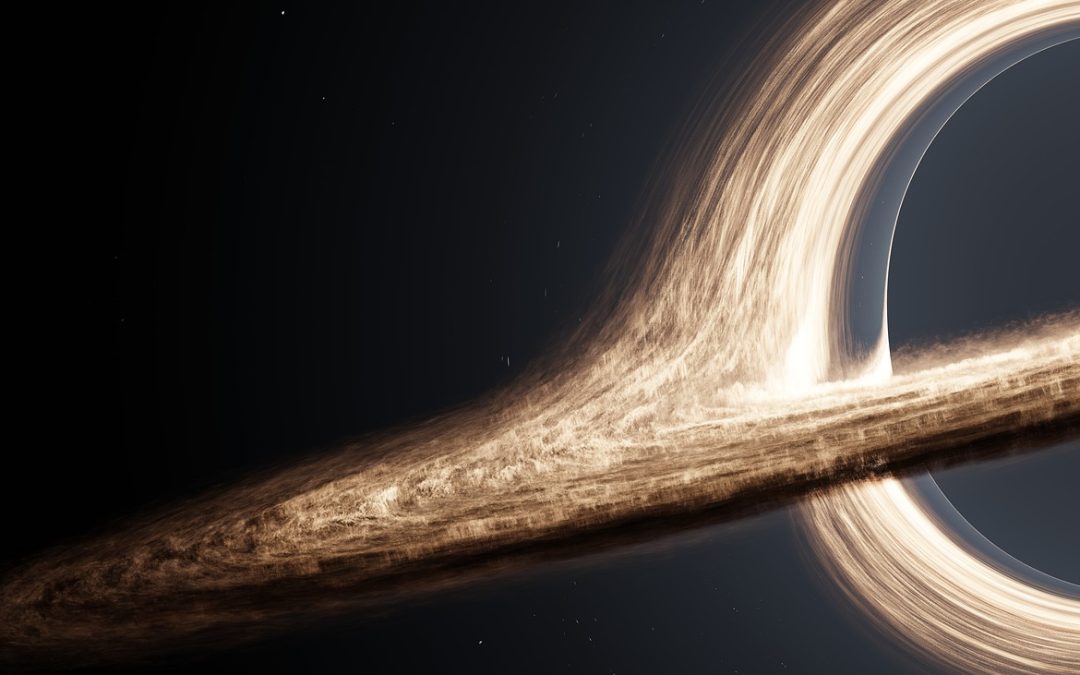
Unveiling the Enigmatic Nature of Black Hole Singularities
Black holes have long captivated the imagination of scientists and the general public alike. These cosmic entities, with their immense gravitational pull, have been the subject of numerous studies and theories. One of the most intriguing aspects of black holes is their enigmatic nature, particularly their singularities.
A black hole singularity is a point within a black hole where matter is infinitely compressed and spacetime becomes infinitely curved. It is a region where the laws of physics, as we currently understand them, break down. This concept challenges our fundamental understanding of the universe and raises profound questions about the nature of reality.
The existence of black hole singularities was first predicted by Albert Einstein’s theory of general relativity. According to this theory, when a massive star collapses under its own gravity, it forms a singularity at its core. The gravitational force becomes so strong that nothing, not even light, can escape its pull. This creates a region of spacetime called an event horizon, beyond which no information can be retrieved.
However, the singularity itself remains a mystery. It is a point of infinite density and zero volume, defying our current understanding of physics. At this point, the laws of general relativity cease to be applicable, and scientists need a theory that unifies general relativity with quantum mechanics to fully comprehend what occurs within a singularity.
Quantum mechanics, the branch of physics that deals with the behavior of matter and energy at the smallest scales, could hold the key to unraveling the secrets of black hole singularities. The theory suggests that at such extreme conditions, quantum effects become significant and may prevent matter from collapsing to infinite density.
One proposed theory is that singularities might be resolved by quantum gravity effects. Quantum gravity aims to combine the principles of quantum mechanics and general relativity to explain the behavior of spacetime at extremely small scales. It suggests that at the singularity, spacetime itself may undergo a quantum transition, preventing the formation of an infinitely dense point.
Another theory is that singularities might be avoided altogether through the formation of a “firewall.” This concept suggests that as matter collapses towards the singularity, it encounters a region of intense energy and radiation, effectively creating a barrier that prevents objects from crossing the event horizon. This idea challenges the notion of a smooth and continuous spacetime near the singularity.
Despite these theories, the true nature of black hole singularities remains elusive. The extreme conditions within a singularity make it impossible to directly observe or study them. Scientists rely on mathematical models and theoretical frameworks to explore these enigmatic regions of spacetime.
Advancements in technology and theoretical physics are gradually shedding light on the mysteries of black hole singularities. The recent discovery of gravitational waves has provided new insights into the behavior of black holes and their singularities. By studying the gravitational waves emitted during black hole mergers, scientists hope to gain a better understanding of the dynamics near the singularity.
In conclusion, black hole singularities continue to be one of the most enigmatic phenomena in the universe. Their existence challenges our current understanding of physics and calls for a deeper exploration of the fundamental laws that govern our universe. While theories and mathematical models offer potential explanations, further research and advancements in quantum gravity and observational techniques are necessary to truly unveil the secrets hidden within these cosmic enigmas.
